A whole house water filtration system is hooked up to your incoming water line, as close as possible to your home’s point of entry. To still get access to regular, unfiltered water after installing a filter unit, you’ll need to install a bypass valve.
In this guide, you’ll learn how whole house filter bypass valves work, how to bypass water filters, and how to install a bypass for your filter system.
Table of Contents
🤔 How Does a Whole House Water Filter Bypass Work?
A whole home water filter bypass diverts water away from the system, allowing you to bypass the system and use unfiltered water in your home.
This means that you’ll always have access to a water supply – even if it’s unfiltered – if you want to temporarily stop using your whole home water filter or the filter is undergoing maintenance or repairs.
Using a bypass valve means you don’t have to uninstall your water filter in the case of it being out of use.
Proper bypass valves consist of three ball valves: an open left valve and right valve, and a closed center valve. To put your water filter in bypass mode, you activate the valve by closing the right and left valves and opening the center valves.
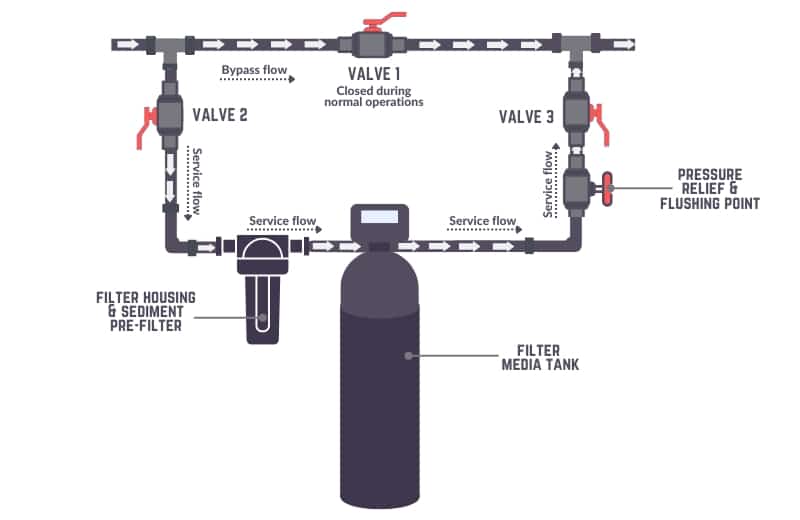
📤 How to Bypass your Whole House Water Filter
To bypass your whole house filtration system, simply locate the bypass valve and press or twist it to activate the bypass.
Some water filters have a bypass valve that’s attached to the unit or mounting bracket, while others come with separate bypass valves that are installed next to the unit.
Once you locate the valve, twist the handle or lever to divert water away from the filter completely. If your system has a button bypass valve, fully push the button in to activate the bypass.
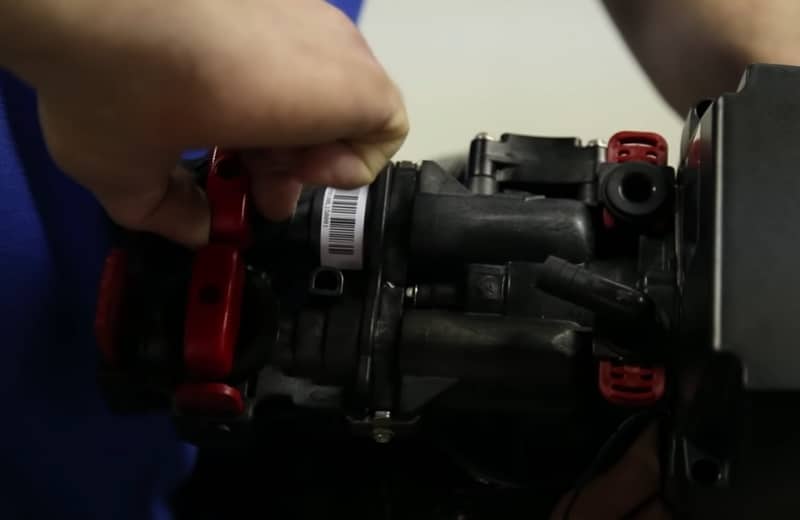
🧾 Reasons to Bypass a Whole House Water Filter
A whole house water filter is the best solution against a whole host of common city water and well water contaminants, from chlorine taste and odor to heavy metals. Whole home filters are installed upstream of all appliances and water heaters, and offer protection against harmful impurities.
Even with their benefits, whole home filter systems aren’t always needed around the clock – or you may be unable to use them at certain times. There are several instances where you might want to bypass your water around this system.
Easier than Installing a New Water Line
It’s much cheaper and easier to install a bypass valve than to install a separate water line for transporting unfiltered water into your home.
You’d need to hire a professional plumber or handyman to install a new water line for you, and pay for the materials and labor involved. If you want to save money, buying and installing a bypass valve is much cheaper.
Convenient for Maintenance
Whole house water filtration systems usually need some form of regular maintenance, such as filter cartridge replacements, filter media changes, and cleaning. Most filter systems need the occasional service, too, to ensure they’re still in working order and don’t need any replacement parts or repairs.
While you’re performing maintenance and servicing, you won’t be able to use your filter. But what if you still need access to water for showering, washing your hands, or doing your dishes?
This is where a bypass valve comes in handy. You can activate the bypass to send raw, untreated water through your plumbing system at times when your filter is out of use.
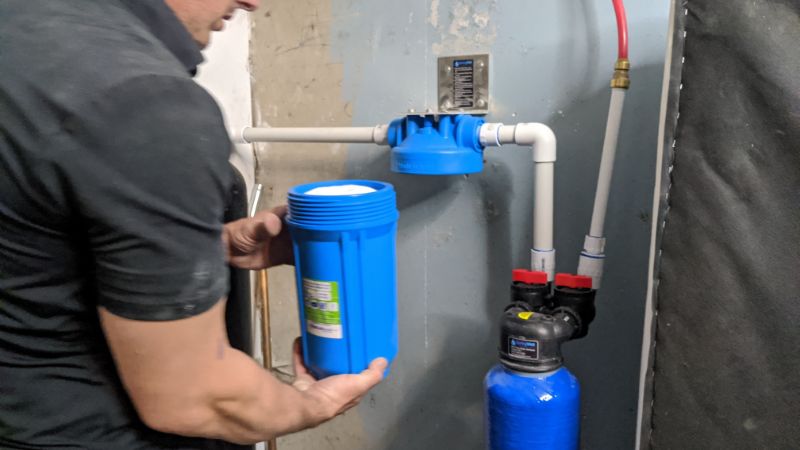
Prevents Interruption of Water Flow
Maybe you don’t need filtered water for all occasions in your home. For instance, it’s fine to use unfiltered tap water for watering your lawn, jet-washing your driveway, or washing your car.
To extend the lifespan of your filters, you can divert water away from the unit when you don’t need to use it. A bypass valve allows you to do this at just the push of a button or the twist of a lever, without interrupting the flow of water in your whole house plumbing.
By only using filtered water when you need to, you’ll prevent water from needlessly flowing through the filter media, wearing them out at a much slower rate.
📖 How to Install a Whole House Water Filter Bypass
If you need to install a separate bypass valve for your filter unit, this section of the guide will explain what to do.
Bypass valves are fairly easy to install – as long as you have the right tools and materials for the job.
Tools & Equipment
The exact tools you’ll need to install a bypass valve depend on the type of valve you’re installing, but you will usually need all of the following:
- Fittings
- Valves
- Marker pen
- Hacksaw
- Bucket
- Solder
- Flux
- Flashlight
- Reaming tool or sandpaper
- Extra pipe
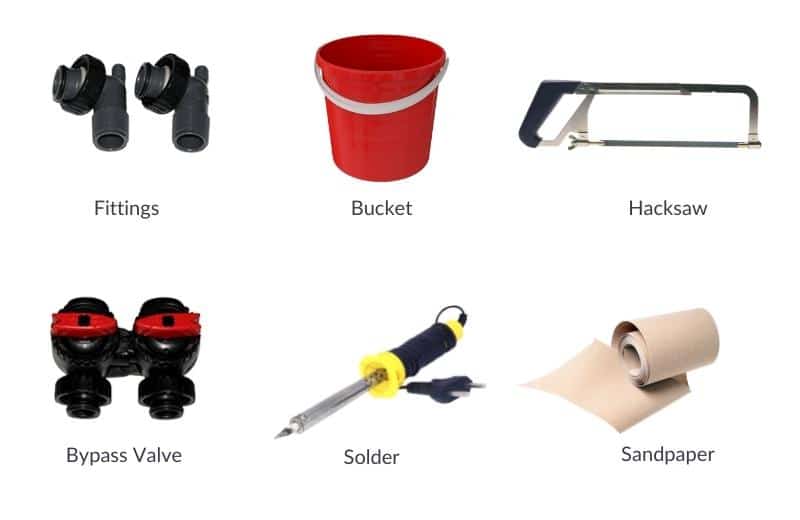
Installation Instructions
A bypass valve should be installed in the same location as your filtration unit: close to water’s point of entry into your home, upstream of your hot water heater.
Follow these instructions to install a bypass valve for your whole home filtration system:
Step 1: Choose a Location
First, choose a suitable spot to install the filter bypass. Aim to install the bypass on or as close to the filter as possible.
Step 2: Assemble the Bypass
Before you get started with the installation, assemble the bypass valve and fittings following the manufacturer’s instructions.
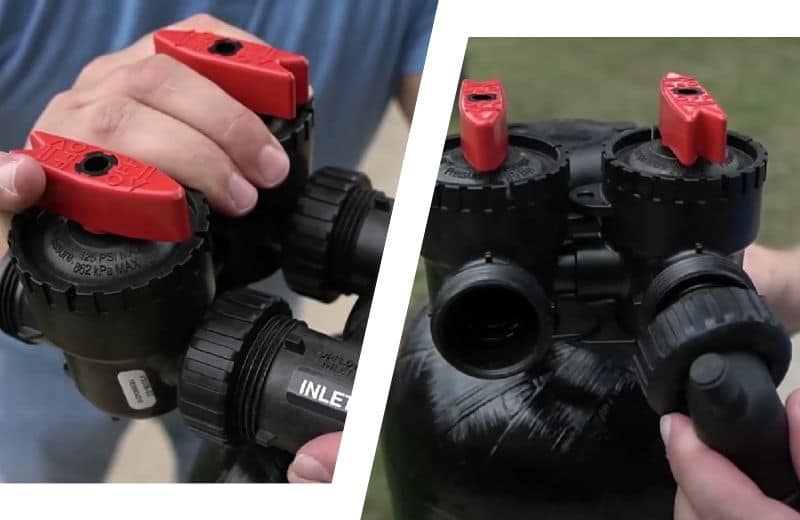
Step 3: Mark the Install Spot
Use a marker pen or a piece of tape to mark the install location on your water pipe according to the valve’s measurements.
Step 4: Switch Off the Water Supply
Don’t do anything else until you’ve shut off your water. Turn the main valve that controls the flow of water into your home until the valve is completely shut.
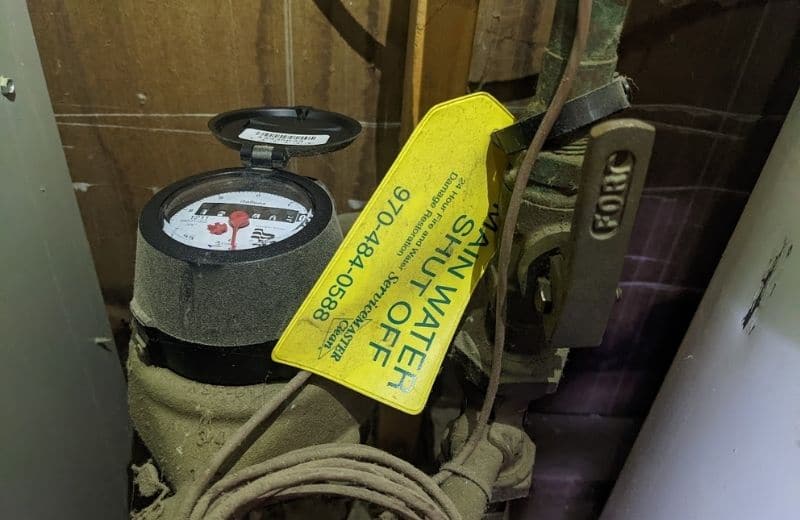
Step 5: Thoroughly Clean Your Water Pipe
Make sure to clean your pipe to prepare it for the installation, especially if you have copper pipes.
Step 6: Cut The Pipe
Cut into the pipe using a hacksaw, and place a bucket of underneath the opening to catch any water. Cut as close to your markings as you can to make sure you cut off the right-sized piece of pipe to fit the valve.
Sandpaper or a reaming tool can be used to clean the edges of the pipe, removing dirt that might cause leakages or corrosion.
Step 7: Attach the Valves
Attach the bypass valves to your water pipe with a compression ring and a nut. Secure the nut in place. Repeat this process for all the valves.
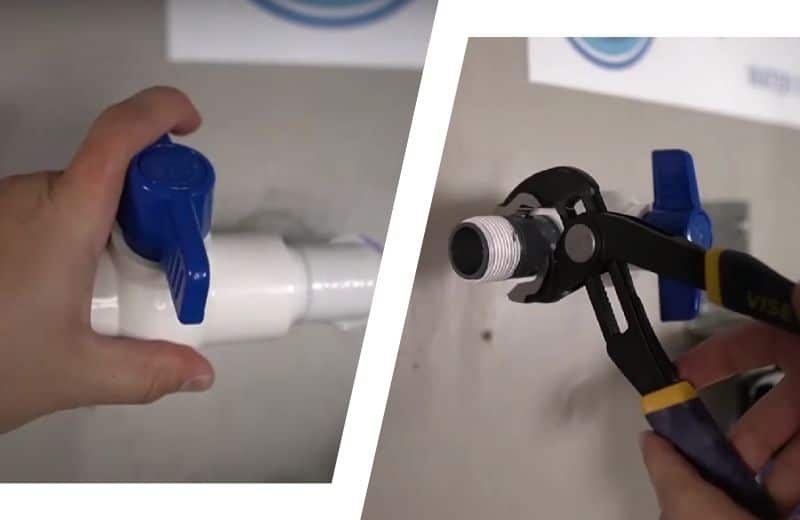
Step 8: Turn on the Water and Check for Leaks
Finally, turn your water supply back on and check around the valves for leaks. Tighten the fittings or use plumbing tape to create a seal if necessary.
Related:
🧠 Whole House Water Filter Bypass FAQs
Can you bypass a whole home water filter?
Yes. Even if your filter doesn’t come with an included bypass, you can still get a separate valve installed to send water around the filter when needed.
Do you need a bypass for a water filter?
No, bypass valves aren’t absolutely essential. However, they’re incredibly handy, ensuring that you always have a supply of drinking water – even when your filtration unit is out of use. A simple bypass is a much more convenient solution than installing a separate pipe to direct water around your filter system.
What does bypass mean in a filter?
Bypass means that water is flowing around a horseshoe bend inside the bypass, and flows straight into your home’s pipes, skipping the filter.
How do you bypass a whole house filter?
A quality bypass lever valve is the easiest way to bypass a whole-home water filter. Follow our installation steps to learn how to install this valve at your pipes.
How do bypass valves work?
Bypass valves control the direction that water flows. Depending on which way the bypass is facing, water flows directly into the filter, or diverts past the filter and passes straight through your plumbing and appliances. Most valves have a button that can be pressed or a lever that can be turned to divert the flow of water.
Do water filters come with bypass valves?
Often, yes. Many filers have an installation kit (this could be included or an optional extra), including items such as a mounting bracket, bypass valves, and quick-connect fittings. A premier whole house filter system should offer a bypass option, and you can simply install it as the picture shows in the user manual. However, some filters don’t come with a bypass, and you’ll need to buy one separately from your local hardware store.
How long can you bypass a water filter?
There’s no recommended minimum or maximum period to keep your filter in bypass mode. Just keep in mind, though, that the longer your filter isn’t in use, the more likely it is to accumulate bacteria and germs. We’d recommend bypassing your filer for a maximum of 24 hours, or uninstalling it entirely if you decide you don’t want to use it anymore.

